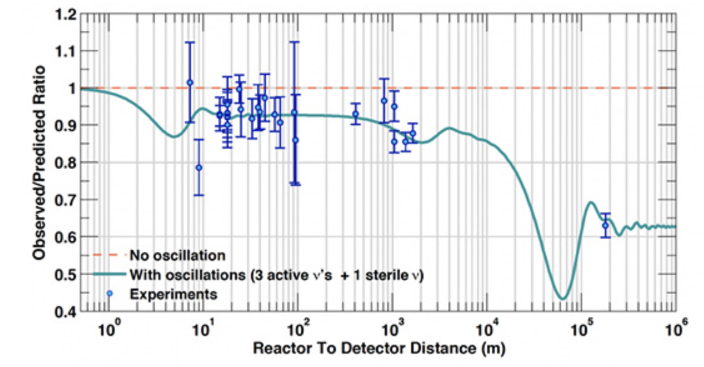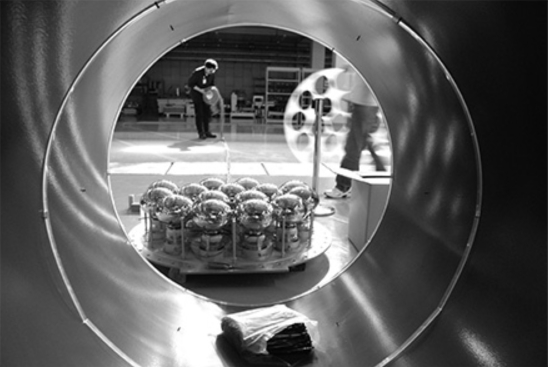Research
Short Baseline Neutrinos
Is there another neutrino in the universe?
According to the Standard Model of particle physics, there are three types of neutrinos which can participate in weak interactions. They are electron, muon and tau neutrinos.

-
Figure 1 :
Ratio of the observed electron antineutrino flux to the prediction versus distance between reactor and detector. The experimental data are better described when an additional neutrino is introduced (blue curve).
(Image source: http://irfu.cea.fr)
As a result of experimental discoveries of neutrino oscillations, this phenomenon indicates non-vanishing neutrino masses. If all the existing evidences of oscillation from atmospheric and solar neutrino experiments and the laboratory experiment LSND are described jointly, at least four neutrino flavors are needed. In fact, short?baseline (SBL) oscillation experiments as well as reactor neutrino flux measurements may give a hint for the existence of a fourth or fifth neutrino, which cannot participate in weak interactions, called sterile neutrinos, mixing with the active neutrinos (Figure 1) and with a mass around 1 eV.
NEOS experiment
The NEOS experiment has measured the energy spectrum of electron antineutrino at 24 m distance from a 2.8 GW thermal power reactor core, at Hanbit Nuclear Power Plant in Yeonggwang, South Korea. The measured spectral shape shows no specific pattern of oscillation for the mass parameter in the sensitive range. The experimental result has been published in Physical Review Letters (DOI:https://doi.org/10.1103/PhysRevLett.118.121802).

-
Figure 2 :
Construction of the NEOS main detector
 Center for Underground
Center for Underground